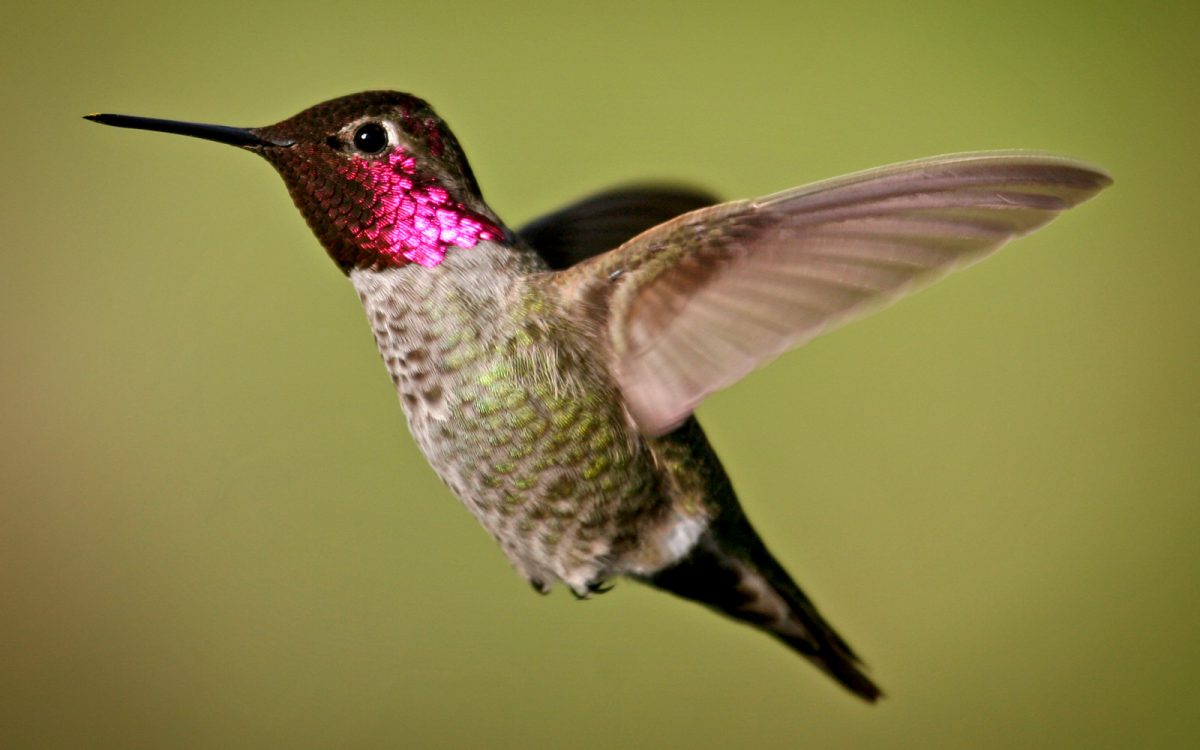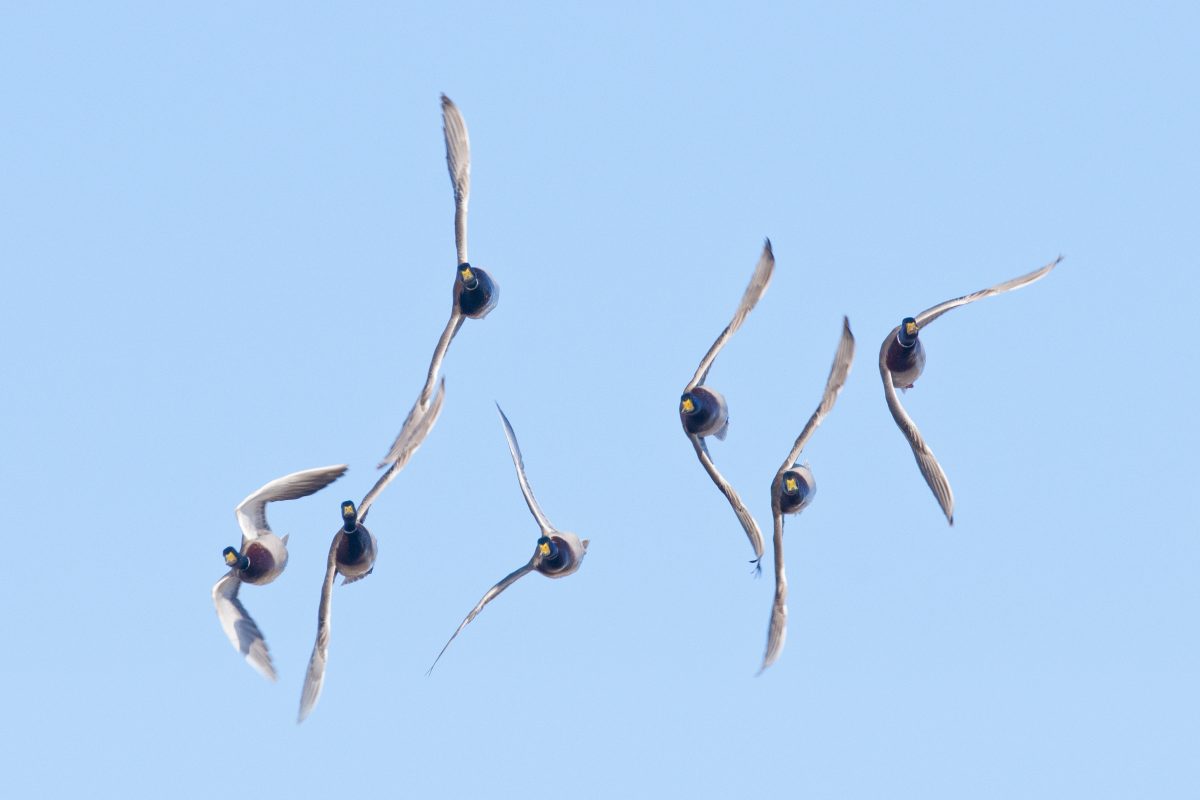Avoiding “feather-benders”
One strategy birds use to evade collisions.

©DUC
Humans have created systems like air traffic control, lights and painted lines to help us navigate from Point A to Point B safely.
Like us, ducks and other birds also have to contend with obstacles on their daily travels. And like us, they crash, sometimes. But for the number of feathered wings dotting our skies, birds do an incredible job of avoiding collisions…naturally.
While it’s easy to take their flying skills for granted as something “they just do,” have you ever stopped to ask how birds navigate their way around obstacles so successfully in flight?
For Doug Altshuler, the answer to this question is a resounding “yes.” Altshuler, a zoologist and professor at the University of British Columbia (UBC), has a long-time interest in wildlife behaviour. “I’ve always wondered what specifically is going on within the animal, that could give us some insight into the choices they make,” he says.
Altshuler’s passion for understanding wildlife and their processes led him to oversee the study of hummingbirds in flight in his laboratory at UBC. What his team of researchers is uncovering is eye-opening.
A birds-eye view
Birds rely on sound, smell and touch to understand their environment and guide their flight paths. “But vision has to be the most important sense for most birds,” says Altshuler.
Unlike honeybees, who avoid collisions by assessing the speed at which objects cross their eyes, hummingbirds appear to base their trajectory on the rate of expansion of objects in their path.
Altshuler explains these two strategies by looking at everyday human experiences. He starts with the honeybee’s strategy.
“Imagine you’re driving down a tree-lined road. The trees that are closer are moving across the retina more quickly. While trees in the distance are moving more slowly.” A honeybee will adjust its route to miss objects that move quickly across its eyes, like those nearby trees.
In contrast, hummingbirds focus on the rate of expansion of objects in their environment. The larger and more quickly an object expands in front of or to the side of them, the more likely a hummingbird is to adjust its course to avoid it.

©Robert McMorran/U.S. Fish & Wildlife Service
“Imagine you’re holding a piece of paper arm’s length from the tip of your nose. Now gradually bring it closer to your body. The closer it gets, the more rapidly it appears to expand,” says Altshuler.
Life or death
“Not only is it a sensitive program,” says Altshuler of the hummingbirds’ sophisticated strategy, “it’s really robust.”
And it could be life-saving. “Birds have more momentum (mass x velocity) when they fly than winged invertebrates, so crashing into an object could be deadly.”
According to the US Fish and Wildlife Service, collisions with man-made structures is one of the leading causes of mortality among migratory birds.
And so, aside from informing technologies like unmanned drones, “A better understanding of how birds see and process the world can help humans …reduce the visual footprint that we’re leaving on the environment,” says Altshuler. This could mean reducing the number of hard-to-see wires and rethinking cityscapes.
Banding together

©DUC
In the meantime, this zoologist says one of the most important things we can do for our birds is being undertaken right here, at DUC. “The most effective thing we can do for conservation is protect habitat,” says Altshuler.
As researchers continue to investigate birds’ innate abilities to fly successfully, DUC will continue to do what it does best: ensure our birds have a safe and welcoming place to land. No air traffic control necessary.



